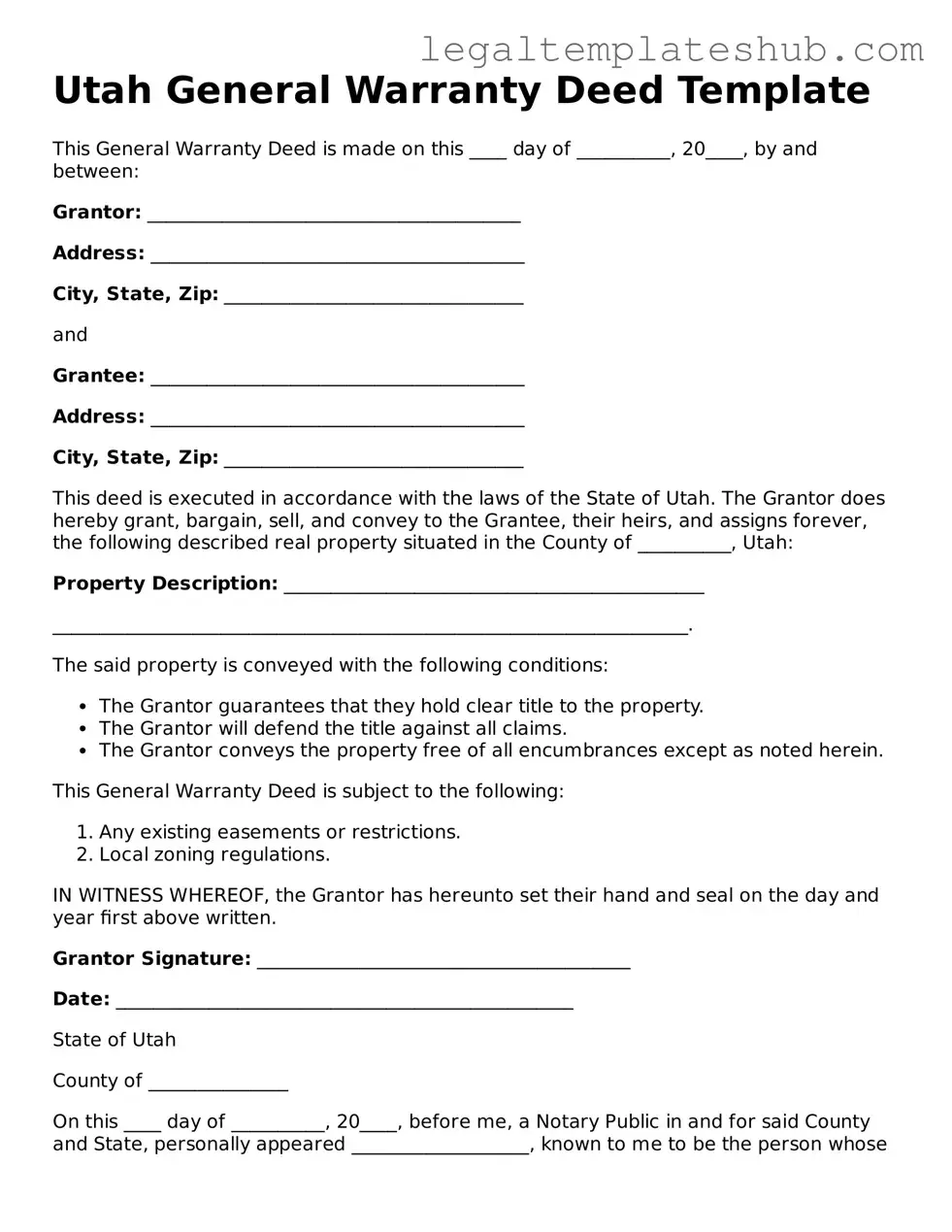Printable Deed Document for Utah
A Utah Deed form is a legal document used to transfer ownership of real property from one party to another in the state of Utah. This form is essential for ensuring that the transfer is recognized by the state and protects the rights of both the buyer and seller. To get started on your property transfer, fill out the form by clicking the button below.
Access Editor
